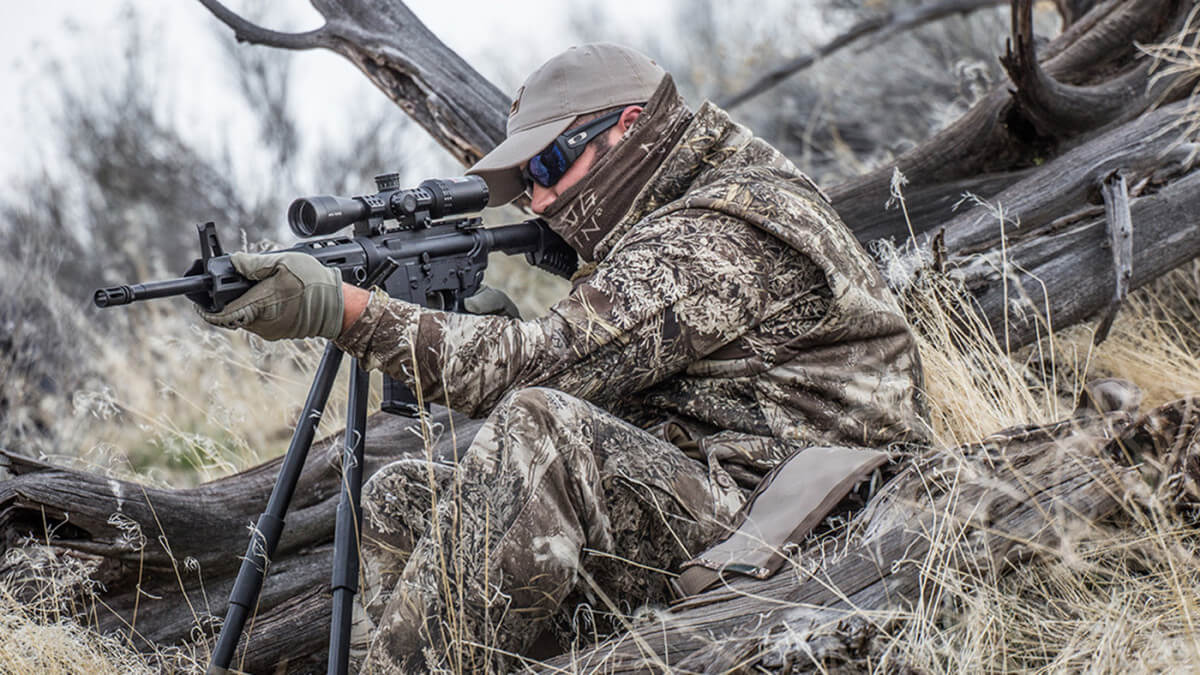- Savage Blog
- Clay Belding's Predator Set Ups
Clay Belding's Predator Set Ups

Predator Set ups
Consistently calling coyotes isn’t easy. Coyotes have incredible senses, and they rely on those senses to keep them alive. Knowing how to maximize each stand to your advantage is critical to success.
Coyote guru and Savage Brand Ambassador Clay Belding spends countless days each year calling coyotes in close. His advice is tried-and-true, and if you follow what’s to come, you’ll put more rounds through fur this season. Let’s dive in!
Set Up Your Swing
Whether you’re right-handed or a southpaw, taking your shooting position into account before switching on the caller is a must. Ignore this step and your maneuverability will be hindered, and coyotes that should be taking a ride in the back of the truck will be able to retreat safely.
“Sit down and study the land before you set up,” says Belding. “As a right-hander, I always like to set up on the far right-hand side of the stand. If a coyote does come from the left, it’s a lot easier for a right-handed shooter to swing from right to left. If you set up to your left, it’s almost impossible to swing back to the right without creating major movement and scaring the coyote. Left-handed shooters should do the opposite — set up on the left-hand side of the stand so you can swing to the right.”
Check out Savage's favorite predator rifles!
Wind & Stand Locations:
Few things foil a good coyote stand like the wind. When hunting coyotes, you either want a crosswind or the wind blowing directly in your face.
“In a crosswind, you don’t want to walk all the way to the end of your downwind side,” said Belding. “Coyotes will most always come in downwind. If you set up at the far downwind side, you likely won’t get a shot at them before they get your scent. Place yourself either in the middle or at the right-hand side of your set up. This way when that coyote works downwind, you will still have a chance to shoot him before he bolts. At the very least you’ll get a running shot. Keep that downwind side open. Put the decoy on the upwind side of your position and you’ll be much more successful in the field.”
The Perfect Imperfect Setup
A seemingly perfect coyote stand can be squandered quickly if attention to detail is lost. Keep your brain tuned-in and always be thinking.
“Sometimes a given location will allow you to see really well, but putting yourself in that location may allow the coyotes to see you,” Belding says. “Don’t silhouette yourself. If the set up looks really good, I’d rather slip down in some cover and loose some visibility than have a coyote pick me off at a distance. Get in a shadow if you can. If you’re in the shadows and the coyote is out in the sun, the sun is in his eyes and it makes it harder for that coyote to detect your location.
“I will also look for the exact spot that allows me to see the most country while staying hidden. Sometimes just scooting 10 yards to your right or left will increase your visibility without exposing your position.”


